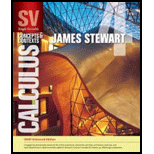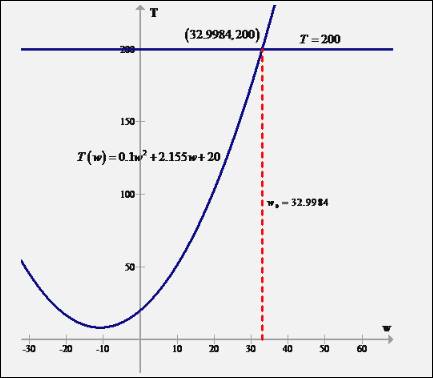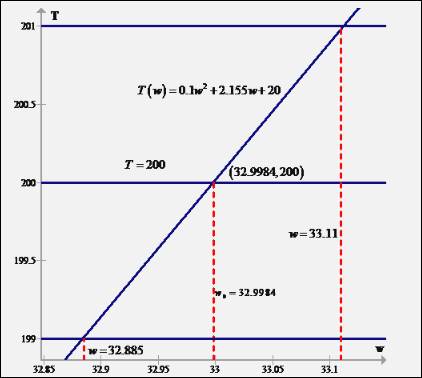
Concept explainers
(a).
To calculate:
Power is required to maintain the temperature.
(a).
Answer to Problem 12E
Power supply required to maintain the temperature
Explanation of Solution
Given information:
Calculation:
Suppose in case
Relationship of
For solving
By using graphic utility.
Now,
So here plot the functions

From the graph it is observed that both
Since the
Thus, the power supply required to maintain the temperature
(b)
To calculate:
Range of wattage is allowed for input power when temperature vary up to
(b)
Answer to Problem 12E
Variation of wattage is allowed up to
Explanation of Solution
Given information:
Calculation:
Let’s assume temperature allowed to vary from
Then one required to find the tolerance
We have,
So here we have drawn horizontal lines

From the graph, we can see that in case one restrict the values of
The distance of exact power
In case we select
Thus, variation of wattage is allowed up to
(c)
To calculate:
Value of
(c)
Answer to Problem 12E
Given value of
Explanation of Solution
Given information:
Calculation:
In terms of
Here
The
The
The given value of
Chapter D Solutions
Single Variable Calculus: Concepts and Contexts, Enhanced Edition
 Calculus: Early TranscendentalsCalculusISBN:9781285741550Author:James StewartPublisher:Cengage Learning
Calculus: Early TranscendentalsCalculusISBN:9781285741550Author:James StewartPublisher:Cengage Learning Thomas' Calculus (14th Edition)CalculusISBN:9780134438986Author:Joel R. Hass, Christopher E. Heil, Maurice D. WeirPublisher:PEARSON
Thomas' Calculus (14th Edition)CalculusISBN:9780134438986Author:Joel R. Hass, Christopher E. Heil, Maurice D. WeirPublisher:PEARSON Calculus: Early Transcendentals (3rd Edition)CalculusISBN:9780134763644Author:William L. Briggs, Lyle Cochran, Bernard Gillett, Eric SchulzPublisher:PEARSON
Calculus: Early Transcendentals (3rd Edition)CalculusISBN:9780134763644Author:William L. Briggs, Lyle Cochran, Bernard Gillett, Eric SchulzPublisher:PEARSON Calculus: Early TranscendentalsCalculusISBN:9781319050740Author:Jon Rogawski, Colin Adams, Robert FranzosaPublisher:W. H. Freeman
Calculus: Early TranscendentalsCalculusISBN:9781319050740Author:Jon Rogawski, Colin Adams, Robert FranzosaPublisher:W. H. Freeman
 Calculus: Early Transcendental FunctionsCalculusISBN:9781337552516Author:Ron Larson, Bruce H. EdwardsPublisher:Cengage Learning
Calculus: Early Transcendental FunctionsCalculusISBN:9781337552516Author:Ron Larson, Bruce H. EdwardsPublisher:Cengage Learning





